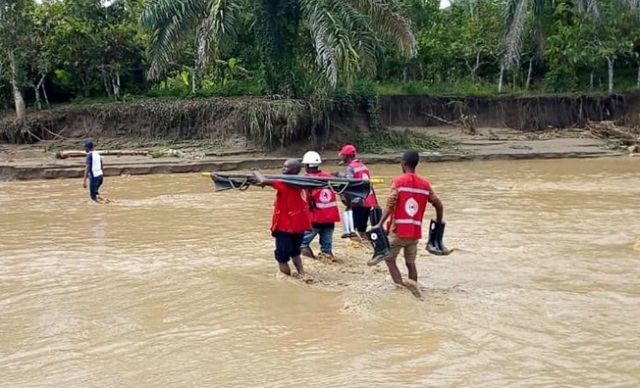
Disaster management needs to be prioritized
Looking at the devastation that the floods and landslides have put on the country, Dr. William Olupot, the Director of Nature and Livelihoods told The Independent on Dec.08 that it is high time disaster management was prioritised and mainstreamed into government programmes.
He told The Independent that since the warning of heavy rains were published as way back as September, the response in terms of putting on notice the people in both low lying zones and highlands should have been robust and the allocation of resources for emergency relief should have been swifter, Olupot said.
Robert Kwesiga, the Secretary General of the Uganda Red Cross Society concurs with Dr. Olupot noting that climate change should be a concern for Uganda.
“It is becoming our reality as we have had challenges of un-anticipated weather changes despite guidance and predictions from the weather experts,” Kwesiga said in November as the Red Cross launched a fundraising campaign of up to Shs1bn in anticipation of adverse weather events.
“We cannot wait to see experiences like Cyclone Idai that Mozambique experienced in March this year with over 1000 lives lost,” he said, “Uganda needs to take on preparedness as opposed to struggling when unprecedented disasters hit.”
This is not the first time that Uganda is experiencing flooding and landslides leading to death of dozens of people and thousands displaced. Last year, at least 34 people were killed when a landslide rolled down the slopes of Mount Elgon in eastern Uganda, wrecking homes and burying people and animals.
In 2012, landslides destroyed three villages in the region while at least 100 people were killed in a landslide in Bududa in March 2010.
Bumpy harvest
On a positive note, seasonal forecasts by the USAID-sponsored Famine Early Warning Systems Network (FEWSNET) say that inspite of the recent second-wave of floods and landslides, much of the region has significantly benefitted from the ongoing above-average rainfall, with well-above normal cropping and rangeland conditions and replenishment of surface and groundwater resources.
As such, crop and livestock production are generally expected to be above-average, though agricultural production reduced in areas that were severely flooded or have been affected by locusts.
In Uganda, cropping conditions over much of northern, southern and eastern regions are currently very good with much of the early planted maize, beans and other pulses currently available in the eastern, central, northwestern regions.
Meanwhile, crops in the southwest are currently in advanced reproductive stages and in better-than-average conditions. These crops are likely to be harvested in late December.
However, Joachim Ocan, a local leader in Lamwo District in northern Uganda told Uganda Radio Network, a local news agency recently that there is looming hunger in his area.
Ocan said crops such as maize and beans planted in this second season have not survived the harsh weather, as a result of heavy rains.
****
 The Independent Uganda: You get the Truth we Pay the Price
The Independent Uganda: You get the Truth we Pay the Price


